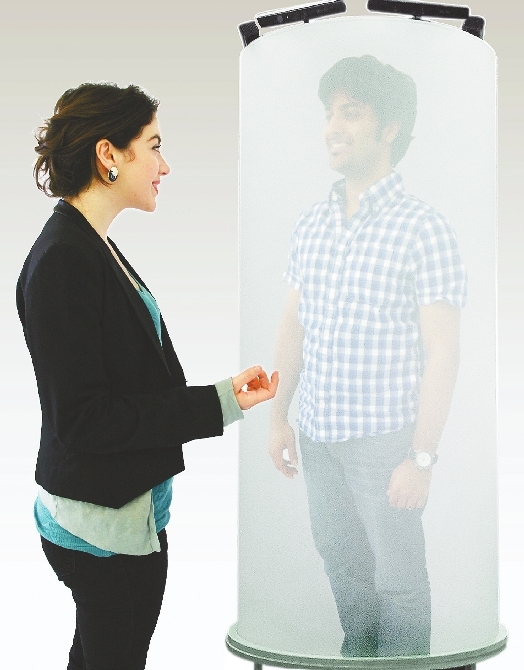
Researchers in Canada have created a device that allows users to create a full-size hologram* of themselves for video chats. Dubbed “TeleHuman 2,” the 3D projector lets people in different locations talk as though they were standing in front of one another. The system is meant to bring video conferences to life, letting people see full-length, 360-degree replicas* of speakers on a call. The technology uses a ring of projectors mounted above and around a human-sized cylindrical pod. A range of depth cameras monitor the user’s movements in three dimensions, and this data is then sent to it’s sister device over the Internet. This can be in a different room in any location, potentially on a different continent. Light-field technology is the key, as it measures the intensity and the direction of light received by the cameras. By keeping track of rays of light, an image can be readily and realistically reconstructed. The display projects a light field with many images, one for every degree of the viewer’s line of sight, which means the viewer does not need a headset like they would for viewing AR* or VR*. The new pod also has exciting new learning and medical applications too. For example, researchers invented BodiPod, which anatomy students use to explore a 3D model of the human body through gestures and speech interactions. Using the cylindrical display, they can wave to peel off layers of tissue, or in X-ray mode, get closer to see deep into muscles, organs, and bone structure.(SD-Agencies) | 
